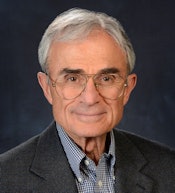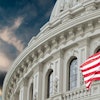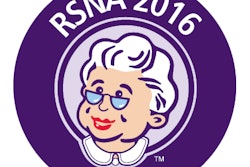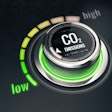
CHICAGO - Is the rate of imaging utilization poised to expand -- or contract? It depends on who you ask, according to a presentation given at the RSNA annual meeting on Tuesday.
"Imaging utilization and reimbursements are trending downward, and all modalities are affected," Dr. David C. Levin, of Thomas Jefferson University, told session attendees. "But predicting future trends is difficult, since there is a multiplicity of factors that both hamper and promote growth."
 Dr. David C. Levin from Thomas Jefferson University.
Dr. David C. Levin from Thomas Jefferson University.After a period of rapid growth in all modalities between the years 2001 and 2008, imaging use flattened, Levin said. This flattening was due to a variety of factors, such as insurers' increased use of radiology benefits management firms and the setting of higher deductibles and copays for patients. There has also been a greater focus on practice guidelines -- such as the Choosing Wisely initiative and the American College of Radiology Appropriateness Criteria -- along with increased concern from patients and physicians about unnecessary radiation.
And, of course, reimbursement cuts have also conspired to clamp down on imaging use. Radiology payments have been cut 12 times since 2006 through various vehicles such as the Deficit Reduction Act (DRA), code bundling, the U.S. Centers for Medicare and Medicaid Services' Multiple Procedure Payment Reduction (MPPR), decreased practice expense per hour rates, and increased utilization factor rates, Levin said.
| Medicare use rate: All noninvasive diagnostic imaging | |
| Year | Exams per 1,000 beneficiaries |
| 2001 | 3,520 |
| 2004 | 4,029 |
| 2008 | 4,422 |
| 2011 | 3,634 |
| 2013 | 3,487 |
Code bundling has had a significant effect, Levin noted. After the 2008 peak, there was a big drop in the imaging use rate due to the combination of echocardiography codes; in 2010, it was cardiac nuclear medicine codes, and in 2011, it was CT of the abdomen and pelvis.
But imaging use has continued to trend downward, even without further bundling measures.
"There was still a drop in the use rate in 2012 and 2013 -- not by much, but still a drop," he said. "That suggests a downturn."
However, to make things murkier, these downward trend factors are colliding with others that could actually boost imaging use rates over the next decade, Levin said. This includes the aging of the U.S. population, the number of patients now insured under the Affordable Care Act (ACA), the practice of defensive medicine, increased patient consumerism in healthcare, increased interest in screening (for example, for lung cancer), and the fact that self-referral continues.
So what does this mixed forecast suggest? The good news is that radiologists will continue to do well financially as long as the trend line stays flat, according to Levin. And it may mean that the specialty will get a reprieve from the intense governmental scrutiny it has endured.
"The important thing about this data is that imaging utilization is no longer increasing," he told AuntMinnie.com. "All those reimbursement cuts have worked, and the problem of imaging overuse has gone away. The Feds don't need to worry anymore."




















